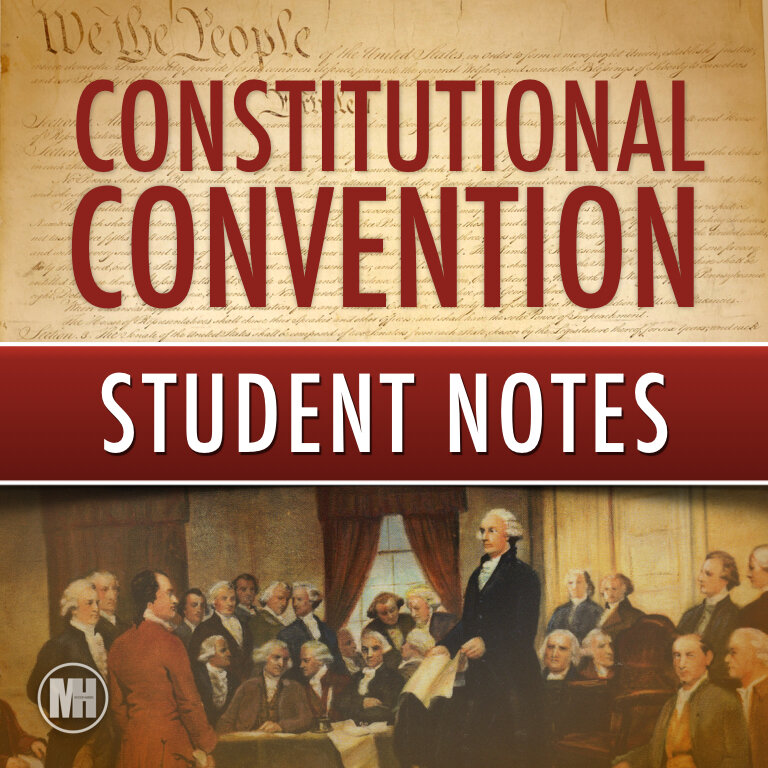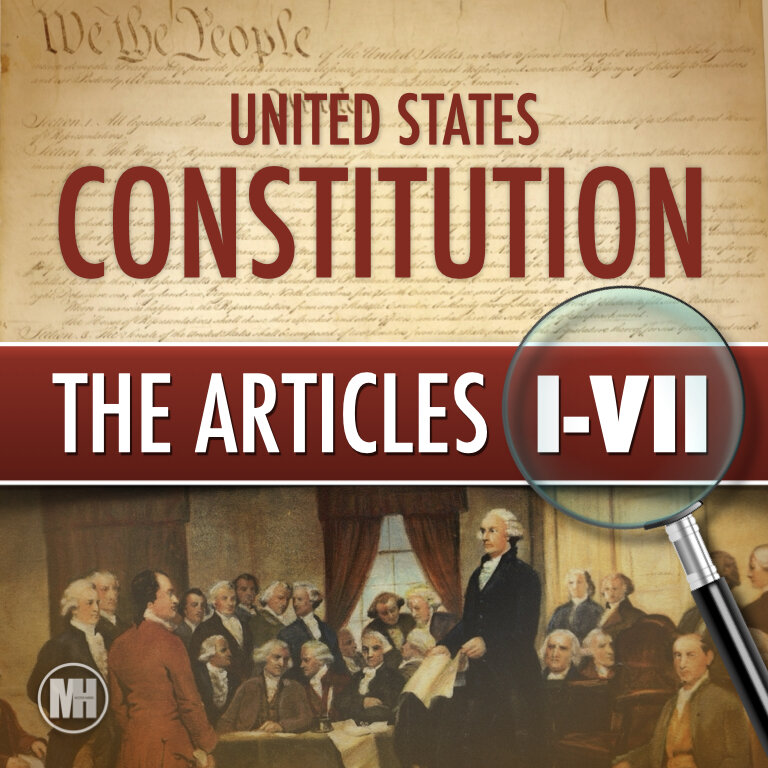Five Creative and Engaging Ways To Teach Your Students The Constitution
Whether you’re teaching a high school government class, 8th grade civics course, or in need of a few upper elementary Constitution Day activities, these 5 tips will most certainly help you and your class better understand the United States Constitution! A foundational necessity to understanding any American government class, or civics course, is to have a fundamental comprehension of the United States Constitution.
Written in 1787, and later ratified in 1789, the Constitution of the United States is the world’s oldest and longest surviving document to govern a people, and it is still active today! Though it is long in history, it’s actually short in length compared to other governing documents around the world. With only 4,543 words in the original document, the founding fathers did an exceptional job at writing, what could be argued as, the most influential and successful document in all of history.
Since this document is so influential, it is important to help our students accurately understand what the Constitution is and what’s inside this precious document. It may feel like a daunting task or a boring topic to teach, but once the basics are understood, students and teachers alike will come to enjoy and appreciate this beautiful document and it’s shaping of history. Having taught the Constitution for over 15 years, I have found a few helpful tips that I’d love to share with you. Feel free to implement these ideas in your classroom and help your students gain an appreciation for this amazing document called the United States Constitution!
1. CONFIRM ☞ Historical Understanding of the Constitutional Convention
Prior to studying the WHAT, I recommend studying the WHY and HOW of the Constitution. WHY did the founding fathers want this document, and HOW did it come about? As you know, the American Colonies announced their Declaration of Independence and won the Revolutionary War, but soon found themselves in a state of vulnerability and weakness due to the failed Articles of Confederation.
The founding fathers knew they needed a better system of government if they wanted to thrive as a free nation, but how was that going to happen? How were they going to protect their individual freedoms yet have a strong centralized government to protect those freedoms. These decisions were soon made at the Constitutional Convention of 1787. Before the document is examined in class, I highly recommend studying the WHY and HOW of the convention by using my Constitutional Convention notes and assessments. This instructional set has proven to be a great foundation for discussion and comprehension moving forward!
2. CHECK ☞ For Comprehension Through a Close Reading of the Constitution
A big-picture understanding of how the Constitution is organized will be extremely helpful. Giving students an understanding of the overall outline, or roadmap of the Constitution, will keep them from becoming overwhelmed and lost in a sea of words they will soon encounter. A close reading, using my Articles of the Constitution: Primary Source Analysis Worksheets, will help students see that the Constitution is really a manual on how to run the government. This manual starts with a purpose statement called the Preamble and continues with 7 major sections, or headings, called articles.
As students analyze this primary source document, they will begin to see the overarching roles of the three branches and the details in how the government operates. Don't be afraid to have your students study this great document. The Founding Fathers kept the Constitution short, and at an 8th grade reading level, so the average citizen of the late 1700's could understand their own government. Your class may grumble at first when talking about the Constitution, but using this "user-friendly" guide will give students a sense of accomplishment and patriotism when completed. I believe you and your students will benefit by using this practical and doable series of worksheets for your classroom.
3. COMPETE ☞ In a Constitutional Scavenger Hunt
Who’s going to say no to a scavenger hunt? Once students have a familiarity with the overall concept of the Constitution, assign this Constitution Scavenger Hunt as a group competition or as individual work. You can even award prizes for completion! This scavenger hunt allows students to browse through the Constitution while finding the main ideas regarding the 7 Articles and 27 Amendments.
Included are 17 questions about the articles and 27 questions about the amendments. All questions (except for one) will be answered with a number so students can scour the 200 year old document, looking for numbers, and not even realize they’re learning about the Constitution. I have found that this activity is on-point, simple, and the most effective way for students to understand what is in this history-making document called the United States Constitution!
⭐️ JOIN MY CLASSROOM FOR UPDATES & COUPONS
4. CONNECT ☞ The Constitution and Make it Relevant
Connect the Constitution to today’s learner with a creative project that examines the Bill of Rights and the additional amendments. The first three lesson ideas mentioned above focus on the foundational understanding of the original document. Since the signing of the document in 1787, the United States Constitution has evolved and adapted through a series of 27 amendments, or changes, that have been added.
It’s within the amendments that I like to make the relevant connection to today’s learner and help the constitution come alive. One option that my students enjoy is creating comic strips that summarize the various amendments. Using websites like storyboardthat.com, students are asked to select any 10 amendments of choice and recreate the amendment in a short, comic-style summary. Creating the comics can be done individually or as partners, and students love seeing the amendments come to life. (See image below for a comic strip example).
Another creative way to summarize the Bill of Rights, or the additional 17 amendments, is to create skits. Organize students into groups of 3-4, and have each group summarize 3-4 amendments with a practical, real-life scenario. Students will write short scripts, practice their skits, and perform to the rest of the class. For example, if a group was assigned the 22nd amendment, students would create a short skit where the President decided to run for a third term because of the success being had.
Students could embellish the scenario with a variety of parts, funny interactions, and end with a cabinet member coming in to remind the President that the limit is two terms. Once performed, you could even make it a guessing game by allowing the class audience to guess which amendment is being performed. Whichever format you prefer, I know your students will love the creativity of summarizing the amendments and learning even more about the United States Constitution.
Sample example of an student created comic strip summarizing the 22nd amendment
5. CREATE ☞ Your Very Own Class Constitution
After you have studied the Constitution, and students know the basic premise of the document, allow them to get involved in creating a constitution for your class. Each year in civics class, as we learn about the United States Constitution, I have my students help me create our very own class constitution. The students love being a part of creating rules and policies for our classroom. This student-led activity has always proven to be a success! Each student's voice is heard as they are actively engaged in the crafting of an official document for our class. The process begins as students are grouped to draft a variety of goals and purposes in the form of a preamble. Once the preamble is approved, students give voice to a variety of articles that should be included in the constitution. When complete, all students will ratify and sign the big document!
Your students will have fun with this entire learning process. Not only will they better understand what a constitution is and how a constitution works, but you will now have an official, student-created document to guide your classroom. This activity has always been an academic success, as students hold me and the other classmates accountable to the new class constitution! Classroom behavior always seems to improve once our student created constitution is in place because kids seems to love following their own rules. As time goes on, you can even alter or change your constitution by adding amendments. The addition of amendments is yet another practical means for students to understand the basic concepts within of the original United States Constitution. Making your very own classroom constitution is so fun and engaging that it has become one of my favorite lessons of all time. My students love the process as well!
Final Thoughts
I hope you can use some or all of these constitutional resources in your classroom. I have used these 5 lesson ideas in my classroom for years and have found them to be engaging, fun, yet content-rich. I wish you all the best as you continue teaching our future leaders. Feel free to contact Mister Harms let me know how your Constitution unit went. I’d love to hear how you’ve incorporated these resources into your classroom, and I’d also love to learn from your ideas as well! Tag or follow @misterharms on social media and join my classroom for future email updates.





